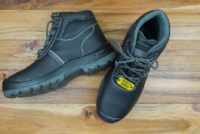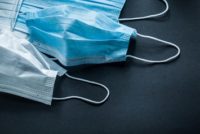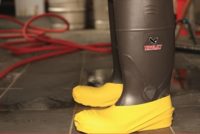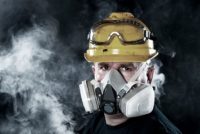No safety technology is changing as fast as that employed in PPE. The devices of just a few years ago are now obsolete by replacements that are lighter, easier to use, and more protective. These resources alert you to developments in the field, and equally important, supply training ideas to get your workers to use their PPE, and use it correctly.
Hard hats have become the PPE that is particularly emblematic of safety, and head protection systems are evolving to meet the needs of modern workers. Read the transcript of our recent conversation with Chris Cota and Aaron Skemp from Ergodyne®, where we took a special look at the most recent developments in head protection.
In our latest episode, we’re talking about a form of personal protective equipment that is almost synonymous with safety itself: Head protection! Head injuries are incredibly serious, so it makes sense that the hard hat has become the PPE that is particularly emblematic of safety. However, other than a few fit tests or maybe the […]
California employers are not required to pay for slip-resistant shoes their employees must wear for work, a state appeals court affirmed. Similar exemptions exist at the federal level.
Female nurses who give cancer patients their medications don’t always wear gloves or gowns to protect themselves from hazardous drugs, according to a new National Institute for Occupational Safety and Health (NIOSH) study.
The 2018–2019 flu season is fully upon us and, according the Centers for Disease Control and Prevention (CDC), may continue well beyond the beginning of spring 2019. February is typically the peak month (by a large margin) in the flu season. This can be a high-risk period for workers in healthcare facilities where sick people […]
Question: Can we require slip resistant and safety toe shoes and have the employee pay for them if they are allowed to take them home? If we do not allow them to take the shoes home do we have to pay for them?
A lot of employers have questions about what specific footwear would work best in their foot protection programs. Experts at Safety.BLR.com® recently answered two questions on the subject—see what they had to say, plus download a free guide from Tingley to learn more on how to put your program on the right footing!
Q: Is the wearing of shorts in a parts warehouse permitted by OSHA?
Wearables are a hot topic in workplace safety, but there is some skepticism among EHS professionals. To get a first-hand look at a solution that is making waves in the market today, the EHS Daily Advisor talked with Timothy A. Risser, co-founder of the Opal System brand of wearables.
The National Institute for Occupational Safety and Health (NIOSH) recently issued an FAQ on seal checking respirators. Seal checking a respirator is required by 29 CFR 1910.134(g)(1)(iii), which states: “For all tight-fitting respirators, the employer shall ensure that employees perform a user seal check each time they put on the respirator using the procedures in […]









